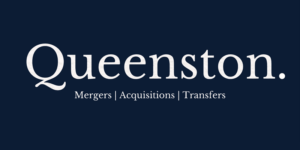TODAY’S ELITE ADVISORS
By Jerry Butler
Introduction
This paper is partly based on the book “Best Practices for Elite Advisors” (Oechsli Institute) and Queenston’s experience buying, selling and valuing financial planning businesses since 2012.
Current trends in the Industry clearly point to:
- The phasing out of the one-dimensional investment advice model in favor of a more holistic planning approach.
- The client-advisor relationship expanding from purely business, to business and
- Affluent families, including spouses and children, becoming more involved in the advisory relationship.
- Technology improving advisor productivity, financial planning, and the overall client experience.
At a glance, none of this appears revolutionary. It seems like common sense. Yet when you take a closer look at the general population of financial advisors, it becomes apparent that common sense isn’t always common practice.
We’ve organized the overview of Elite Advisors into the following categories:
- Wealth Management
- Practice Management
- Client Loyalty
- Business Development
NOTE: An Elite Advisor business model will make your business worth twice as much as the traditional business model.
Wealth Management
It’s been over a decade since elite advisors became early adopters of comprehensive wealth management. This requires continuous learning — an ongoing expansion in both the depth and the breadth of their knowledge about, first, the affluent investor and, second, the complexities and nuances of true wealth management. The need to learn continuously has prompted elite advisors to surround themselves with knowledge workers (former sales assistants who’ve become CFPs, practice managers, relationship managers, etc.). They also develop working relationships with outside experts.
Services the Affluent Want
Regardless of whether a particular wealth-management solution is profitable, time -consuming or enjoyable, elite advisors deliver what affluent clients need and want. We’ve said it many times, but our research on today’s affluent is clear: They want a solutions provider to oversee multiple aspects of their family’s financial affairs, and the affluent woman of the household wants to be involved. “Solutions provider” is precisely the role that elite advisors play. Equally important is the fact that they are proactive in making certain they’re working with both spouses.
As we list the spectrum of wealth-management services, remember the following: Although these are areas in which affluent investors want advice and guidance, the process of delivering them is very fluid. We’re living in a globalized and digitized world, one where change has become the norm. With that caveat, think in terms of whether you have the expertise within your firm to deliver all of these services. If you don’t, that’s okay, but you’re going to need to coordinate with appropriate outside experts.
10 Key Wealth-Management Areas
The following are 10 key wealth-management areas pulled straight from our many years of research on the affluent. The majority of today’s affluent clients want these services. Your firm may be offering some or all of these, but as you read each one, make note of your current offering in each area and determine any necessary action steps.
1.Banking Services; 2. Insurance Planning; 3. Asset Management; 4. Cash Flow Management; 5. Education Planning; 6. Tax Planniing; 7. Retirement Planning; 8.Estate Planning; 9.Charitable Giving; and 10. Generational Planning.
Themed Review Meetings
Instead of having clients attend meeting after meeting with the same agenda (or no agenda), many elite advisors are holding three to four “themed” reviews throughout the year, with an agenda that specifies which area of the client’s financial life will be addressed at which meeting.
Creating themed reviews benefits financial advisors on two fronts:
■ Positioning as a Wealth Manager – Clients today are more aware of the value they’re receiving. When an advisor can help them in many areas, they’ll perceive him or her as a comprehensive wealth manager, not just an investment advisor, and will turn to the advisor for multiple services. Affluent prospects will also want to see a concrete example of a financial advisor’s comprehensive wealth-management services, providing tangible evidence of his/her ability to deliver.
■ Structure – The advisor is able to ensure that every affluent client is offered a full array
of ancillary services: scheduled meetings with outside experts, reviews of old insurance policies, meetings with the children, etc. This structure provides the professional platform upon which an advisor is able to demonstrate his/her value.
We recognize that every financial advisor has different areas of expertise and different processes for working with clients. That’s fine. The secret is fitting service elements into a clear process that both clients and prospects can understand.
In creating a series of themed reviews, the first step is to analyze everything currently being done for top clients. Next, determine what else could be done for them. The third step is to decide when each element is analyzed or reviewed with the client. All of this culminates in a written outline that can be given to each affluent client and prospect.
Example: A series of three client reviews scheduled throughout one year
(Actual agendas would be more detailed, based on each financial advisor’s specific
wealth-management process.)
Review 1—Portfolio Review
- Asset Allocation
- Performance
- Fee Discussion
Review 2—Financial Planning
Net Worth Statement Update
- Changes to Your Financial Life (inheritance, marriage, etc.)
- Family Discussion (kids and/or parents)
Review 3—Risk Audit
- What-if Scenarios
- Wills
- Estate Planning
- Insurance (life, health, disability, long-term care, etc.)
- Outside Experts – Current professionals used and ratings for each professional (1–10 scale)
Done properly, themed reviews should be command performances — opportunities for the advisor to display his or her broad expertise and/or wealth of knowledge on a variety of subjects. This knowledge can be naturally woven into an advisor’s marketing/branding and professional services.
Wealth Management Key Takeaways:
- Wealth-management solutions are always changing, so you need to always stay ahead of the changes.
- Being capable of providing a service is very different from actually providing the service. What is your process for delivering each service?
- Themed reviews are an excellent way to add structure to your process. Three reviews per year, with three distinctly different agendas, help you provide a clear, comprehensive approach.
- Print a copy of your client review agenda for use with prospects. It’s tangible evidence of what you do.
- Engaging the spouses of your clients can be hard work, depending on your proficiency with this in the past, but it’s well worth the effort.
- Calling non-participating spouses and asking them, “Is there anything on your mind financially?” is a great way to begin the relationship-building process.
- Practice Management
Elite advisors run their practices like a business. For them, practice management is really all about managing a business in the most efficient and client-centric manner possible. Their mantra has become “delivering Fairmont service with FedEx efficiency.”
Although every elite advisor has a unique business, the following are practices common to the majority:
■ Clients segmented into two service models: Platinum & Gold (>80%)
■ Clear roles and areas of responsibilities (>80%)
■ Effective weekly team meetings (>80%)
■ Clear communication within the team (>80%)
■ Established policies and procedures (>80%)
■ Fewer but more affluent households (>70% <200hhs)
■ 75% or more of their revenue is recurring (> 80% )
Practice management is a work in progress, even for elite advisors. Every time a financial advisor introduces a new service, adds to staff or makes any type of change, it’s important to revisit all policies and procedures, and make sure everything is linked and everyone is on the same page. Are roles and responsibilities still clear? Should we eliminate a certain procedure? These are some of the many questions that must be asked.
Working with Support Personnel
Support personnel have always presented a conundrum for financial advisors. Changing the titles from sales assistant to more professional varietals such as client associate, client service associate, etc., rings hollow without corresponding structural changes.
Rarely, if ever, can affluent expectations be met without first- class support personnel committed to delivering Fairmont service with FedEx efficiency. We consider this level of support indispensable for advisors who are serious about achieving long-term success.
The relationship between the elite advisor and support personnel is a partnership. They work well together, have clarity regarding roles and responsibilities, lines of communication are open, and are on the same page when it comes to relationship management and relationship marketing. Elite advisors have mastered the art of delegation and empowerment, and their support personnel are consistently up to the challenge.
Practice Management Key Takeaway
- Discuss assistant’s performance regarding the area’s of importance. There should be an overall discussion about team performance. What could be done better? Have assistants self evaluate on each criteria. Compare results of advisor score and assistant’s score.
- Weekly team meetings. Elite advisors conduct meetings with all personnel weekly. The meetings are same day / same time every week with an Agenda.
- Celebrate successes. Whenever there are successes – spread the word – celebrate. Look for opportunities to give positive reinforcement
- Client Loyalty Elite advisors rarely lose clients. There are two major trends that have occurred:
- Gender Shift – Women are now more involved in their family’s financial affairs. Elite advisors make it a priority to have a strong relationship with both spouses of a household.
- Relationship Shift – Skepticism and distrust is so prevalent that today’s clients want to know their financial advisor on a personal level. This is a trust issue.
Both of these trends are having an impact on loyalty. When they are addressed, loyalty is strengthened. When ignored, loyalty weakens.
Client Profiling
The objective is to interact with clients on both a professional and a personal level. The professional side includes in-person reviews, effective practice management, problem solving, personal communication, proactive financial advice, etc.
Personalizing the relationship is a relatively new concept. It needs to involve all staff. Those items that are important to the client should be communicated to all staff. E.g. hobbies, events, family, etc.
This information should be gathered through communication not filling out surveys or questionnaires. “Catching up” meetings can reveal many informal but important information including referrals.
Client events are an important component of the relationship marketing that works so well with clients and prospects. They provide an informal setting for clients to meet other like minded clients and become more comfortable with advisor / spouse and staff.
Social networking is also and important component of relationship marketing. Facebook, Linkedin, Instagram, etc..
Any thoughtful gesture is an excellent way to express “I listen”. Personal touches surprise and delights clients.
Client Loyalty Key Takeaways
- Investment performance is important but getting to know clients personally is the key ingredient in building loyalty.
- Elite advisors put structure around relationship management. There is a plan for client lunches, thoughtful gestures and social gatherings.
- Intimate client events are a great way to strengthen loyalty.
- Have contact points with both spouses – business and social contact points.
- Business Development
Clients do not trust advertising or what people they don’t know tell them BUT they do trust the opinion of people they know. This fact has resulted in the most successful business development discipline – Relationship Management and Relationship Marketing.
Affluent clients discover their financial advisor through some form of personal introduction. In today’s world of distrust, a personal introduction is a statement of trust. The key is to be where you will get that personal introduction.
Elite Advisor Marketing Activities
Successful advisors execute the various relationship marketing methods and they do so consistently. Strategic alliances, social prospecting, indirectly generated referrals, personal introductions and intimate events result in new clients. You want large accounts? Indirectly generated referrals are by far the best method of catching the whales!!
Successful business development is a result of proactive and consistent behaviour. Have a plan to address the successful activities in the previous paragraph and work the plan.
Personal Introductions
NOTE: Referrals and personal introductions are not the same thing!!
A general request for referrals is usually met with a blank stare – asking a good client to bring their friend Joe Smith to the next event the advisor is hosting is more likely to result in a personal introduction. The statistics show that clients are 77% likely to introduce this way but are 73% uncomfortable when generically asked for a referral.
The vast majority of venues where these personal introductions take place is in social settings either hosted by the advisor or by the client. Elite advisors do their homework and know what circles their clients travel in and take advantage of social settings to get introduced.
Business Development Key Takeaway
- Establish annual new client / AUM goals.
- Identify affluent prospects connected to affluent clients with whom you would like an introduction.
- Incorporate a system for asking for introductions in a social setting.
- Identify professionals who work with affluent clients.
- Create a relationship management strategy for these professionals including social and business relationships.
- Make your expectations known and accountable.
- Weekly meetings should have business development agenda items.
Conclusion
Clients expect more than knowledgeable and competent; they have to know their advisor has their best interest at heart.
Those of you who know me know that I have touted Relationship Management as the most valuable business model. Do what you do best and contract out or hire people to do the other important variables. Managing the relationship is a full time job when done correctly.
A quick review:
- Develop a relationship with both spouses.
- Expand the relationship to include a social component.
- Clients have to feel they know their advisor on a personal level.
- Clients want a solutions provider to oversee multiple aspects of their family’s affairs.
- Superior service administration is critical – attention to detail, close communication, accountability and training.
- The best defense for losing a client is proactive offense.
- Have a Relationship Management and Relationship Marketing Plan.
- The above can make your business worth 4 to 5x











